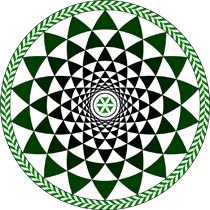Speaker
Dr
Tomasz Korzeniak
(Faculty of Chemistry, Jagiellonian University)
Description
`The exciting property exhibited by certain cyanide compounds is photomagnetism, which allows for the control of the magnetic properties with light irradiation. Although photomagnetic effects are known to generate various effects, the most common are the spin crossover (light-induced excited spin state trapping or LIESST) and charge transfer phenomena.`
`The motivation for our research in this area is to investigate the photomagnetic properties of heterometallic Cu$^\mathrm{II}$-Mo$^\mathrm{IV}$ coordination polymers with cyanide bridges that would display spin crossover (SCO) phenomena on the Mo$^\mathrm{IV}$ centre of 4d$^2$ electronic configuration (singlet-triplet spin transition, S-T). We have chosen the family of the structurally related Cu$^\mathrm{II}$-[Mo$^\mathrm{IV}$(CN)$_8$]$^{4-}$ molecular systems, which are known to exhibit complex photomagnetic properties.`
`In the present work, two coordination polymers [Cu(chxn)$_2$(H$_2$O)$_2$][{Cu(chxn)$_2$}$_3${Mo(CN)$_8$}$_2$]$\cdot$H$_2$O and [Cu(pn)$_2$(H$_2$O)$_2$][{Cu(pn)$_2$}{Mo(CN)$_8$}]$\cdot$2H$_2$O (chxn=1,2-diaminecyclohexane, pn=1,2-diam- inepropane) have been investigated for optical and photomagnetic properties (irradiation with 436 nm line, in the range of the LF band of Mo$^\mathrm{IV}$ complex). The molecular structures of [Cu(chxn)$_2$(H$_2$O)$_2$][{Cu(chxn)$_2$}$_3${Mo(CN)$_8$}$_2$]$\cdot$H$_2$O and [Cu(pn)$_2$(H$_2$O)$_2$][{Cu(pn)$_2$}{Mo(CN)$_8$}]$\newline\noindent\cdot$2H$_2$O reveal the topologies of a 2-D coordination layer built of hexagonal grids shown and 1-D chain, respectively. The negative charge of the cyanido-bridged polymeric motifs is compensated by th isolated Cu$^\mathrm{II}$ complexes. Both systems display paramagnetic properties due to the presence of Cu$^\mathrm{II}$ centers (S=1/2) separated by the diamagnetic [Mo(CN)$_8$]$^{4-}$ units in the ground state. In both cases the compounds are photosensitive and the photoexcitation has been found to correlate with the singlet-triplet transition on the Mo$^\mathrm{IV}$ sites.`
Author
Dr
Tomasz Korzeniak
(Faculty of Chemistry, Jagiellonian University)
Co-authors
Prof.
Barbara Sieklucka
(Faculty of Chemistry, Jagiellonian University)
Dr
Dawid Pinkowicz
(Faculty of Chemistry, Jagiellonian University)
Mr
Michał Liberka
(Faculty of Chemistry, Jagiellonian University)
Dr
Sujit Sasmal
(Faculty of Chemistry, Jagiellonian University)

